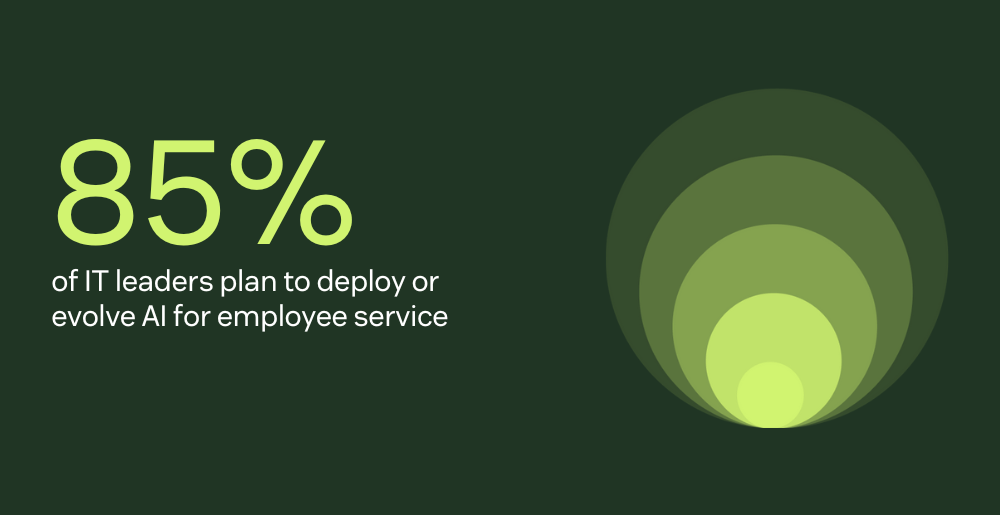Article • 3 min read
86% of IT leaders rank employee service as a top priority. Here are their next steps.
With smarter tools and faster support, they’re turning employee service into a business advantage.
최종 업데이트: June 5, 2025
Gone are the days when IT focused solely on infrastructure and digital transformation.
Nowadays, IT teams play an integrated—and integral—role in employee experience, especially when it comes to delivering top-notch employee service. In fact, nearly all IT leaders (86%) say improving support for employees has increased in priority in the past three years—achieving parity with other top IT initiatives, like securing data privacy and protection, and enhancing customer service.
What’s driving this shift? Today’s employees expect seamless, personalized, consumer-grade service in their workplace. When they have an issue or a question, they want instant, 24/7 help. Waiting days for an answer is no longer acceptable.
IT leaders recognize that they have an important role to play: nearly 9 out of 10 agree they’re on the hook to meet these expectations and build out the next generation of employee experiences.
Delivering frictionless experiences is more than meeting employee demands. It also impacts key business metrics like employee retention, satisfaction, and productivity—results organizations can’t afford to ignore.

To understand how organizations plan to boost these metrics and meet employee expectations, we asked 1,200 senior IT leaders across eight countries to weigh in.
Here are three ways IT leaders plan to elevate employee service at their organizations:
1. Streamlining ownership of the employee experience
Despite rising demands from employees for seamless workplace experiences, many organizations struggle with structural and technological barriers that prevent scalable, effective employee service. Nearly half (49%) of IT leaders reported that no one owns the employee service experience at their organization. Instead, each department makes their own solutions—creating inconsistent experiences for employees.
IT leaders are striving to overcome these structural barriers by taking ownership—delivering integrated, streamlined support for all of employee service issues and inquiries.
2. Centralizing and modernizing IT infrastructure
More than half (53%) of IT leaders said siloed employee experience tools and data limit usability and effectiveness—making employee service frustrating and inefficient. Tackling these outdated, disconnected systems ranks at the top of the priority list.
To alleviate this issue, IT leaders want to upgrade to streamlined solutions that deliver centralized employee support. The majority (85%) of IT leaders prefer using a single solution for employee service that meets the needs of multiple departments—whether it’s IT, HR, Facilities, or other employee-facing functions.
By consolidating platforms, integrating tools, and aligning data sources, IT leaders will create more cohesive, seamless support. And while modernization will come at a cost, nearly all IT leaders agree the investment is worth it: 86% said investing in employee service experiences has a very positive ROI.
3. Investing in AI to meet rising employee expectations
To scale and deliver faster, accurate assistance to employees, many IT leaders are looking to AI. According to our research, 85% of IT leaders plan to deploy or evolve AI for employee service experiences.
Some organizations are already realizing tremendous value by leveraging AI for employee service. LATAM Airlines, the leading airline in Latin America, uses AI to streamline internal support for more than 30,000 employees worldwide. Their employees can access instant answers to questions around payroll, policies, benefits, and more.
Leveraging a robust knowledge base and an AI agent, LATAM has achieved 90% employee satisfaction and 80% AI agent accuracy.
Our data is clear: forward-thinking IT leaders are ushering in a new era of employee experience—creating consistent, scalable service with AI-powered solutions. By streamlining experiences, investing in AI, and modernizing organization-wide infrastructure, IT will not only elevate workplace efficiency and productivity, but boost employee satisfaction, talent retention, and the bottom line.
